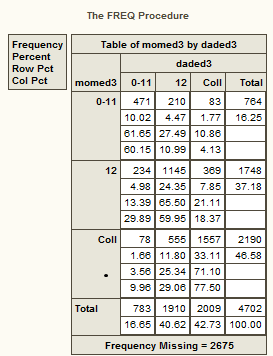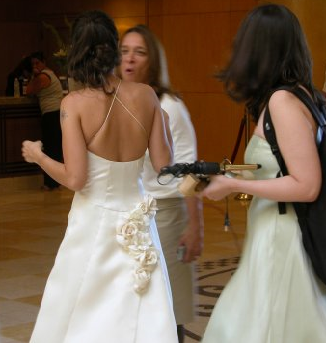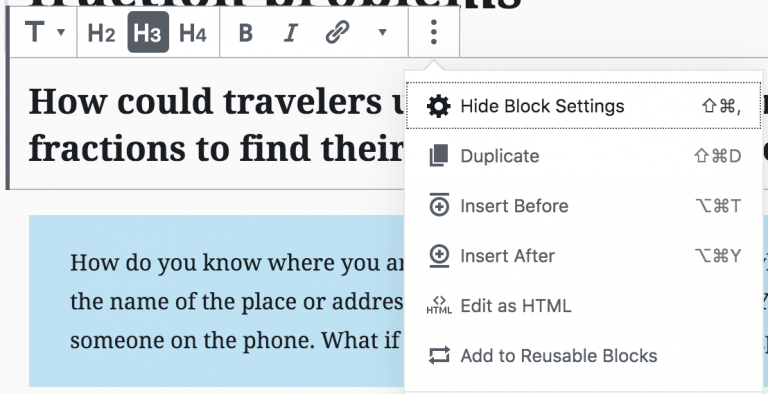Why you care about conditional distributions: The MRS degree explained
- Getting an MRS degree is an effective strategy.
- You care about conditional distributions even if you don’t know what they are.
When I was an undergraduate at Washington University in St. Louis in the 1970s, nearly all of my friends (and the vast majority of the student body) could be sorted into one of three, non-exclusive subgroups:
- Jewish students
- Pre-medical students
- Students who intended to marry a Jewish doctor, also known as “Getting her Mrs. degree”. (Yes, back then people actually said flat out that is why they were in college. At least if they were under the influence of enough substances of which I never partook but read about in books that I checked out of the library.)
Fast-forward 20 years when I was an associate professor at a very nice, Christian private college reviewing applications of the freshman class we had just admitted. One of the questions was, “What are your goals in attending college?” A majority of both males and females selected, “To find a spouse.” It should be noted that most chose other goals as well, showing progress, I guess.
Does this work? I don’t have data on what percentage of people met their spouse in college but the TIMSS data do provide information on assortative mating. Hence, the importance of conditional distributions.
First, let’s start with a marginal distribution. A marginal distribution in a two-way contingency table is the row or column totals divided by the grand total. For example, look at the table below:
 The marginal distributions are (rounded) 17% of father’s had less than a high school education, 41% were high school graduates and 43% were college graduates.
The marginal distributions are (rounded) 17% of father’s had less than a high school education, 41% were high school graduates and 43% were college graduates.
To see the conditional distribution for mother’s education, look at the row percentages (the second from the bottom in each cell).
Given the CONDITION that the mother has a college degree, the distribution of father’s education is 4% less than high school, 25% high school graduates and 71% college graduates.
Given the CONDITION that the mother is a high school graduate, the distribution of father’s education is 13% less than high school, 66% high school and 21% college graduates.
SO … a woman who is a college graduate is 3.5 times more likely to marry a college graduate than a woman who is high school graduate. She has less than one-fourth the probability ( 4%/ 13%) of marrying a man with less than a high school education compared to a woman who graduated from high school.
Why people care about conditional distributions in general … even if you are not married, married or hate marriage, Mrs degrees aside, a conditional distribution answers the question, “Given X, what are the odds that Y?”
Given that I finish my Ph.D. what are the odds that I will make over $90,000 a year?
Given that I am over 45 years old, what are the odds that my baby will have Down syndrome?
Given that I live less than half a mile from the coast, what are the odds that my home will increase in value?
And a million similar questions.
DISCLAIMERS TO KEEP PEOPLE FROM SENDING ME HATE MAIL
- The person in the wedding photo above did NOT go to college to get an MRS degree. She went to NYU, her husband went to Stanford and they met at a conference.
- The relationship between mother’s education and father’s education may be due to some third variable unrelated to that the mother (or father) actually went to college. For example, the resident rocket scientist when searching for a wife was specifically looking for someone with a graduate degree. He says this is because he could not imagine having conversations about topics that interest him, like compilers, with someone without a graduate education. Personally, I suspect it is because when he says things like, “Why don’t we name the baby after Gaston Julia?” I say, “What a nice idea!” as opposed to “What the hell are you talking about?”
Also, if you are at WUSS you can come to my class on categorical data analysis and I don’t want to hear any lame excuses like you live in Australia. San Francisco has an airport, you know, and things you can’t get in Australia like the Exploratorium, Ghiradelli’s chocolate and freezing cold, foggy wet weather. As Meatloaf said, Two out of three aint bad.


I don’t use SAS primarily, but this still looks fun and I wish I had been paying enough attention to snag the early registration discount…
Also, October is a great month to visit SF! I don’t understand why, but it’s sunnier and warmer here then than it is in June and July. Also, if you want something to do downtown, check out the Privately Owned Public Open Spaces (POPOS):
http://www.spur.org/publications/library/report/secretsofsanfrancisco_010109
There’s a pdf at the link. The ones on Sansome are nice, as is the hidden one above the mall. Cheers!
Glad to hear the weather is not too bad in October as I hate cold. Generally when I’m at WUSS I am too busy going to sessions to get outside much, but thanks for the tip. I’ll try to do a little exploring of downtown.
+1